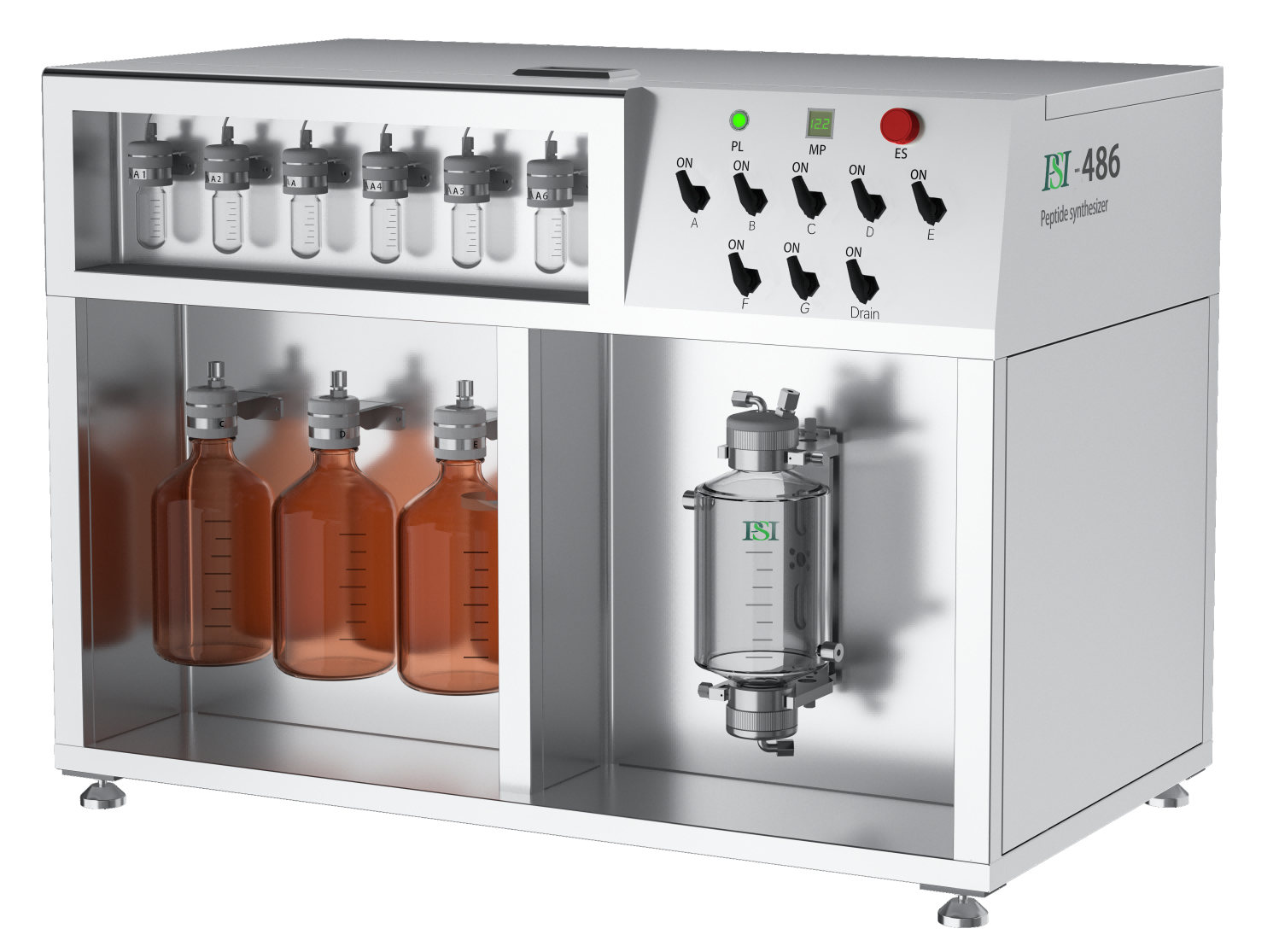How the Pilot Peptide Synthesizer Works and Tips for Handling It
Release Time:2024-04-23
Number of views:1315
The Pilot Peptide Synthesizer is a laboratory device for the synthesis of peptide molecules, which are widely used in the fields of biochemistry, molecular biology, protein engineering and drug discovery. Peptide chains are synthesized residue by residue by adding amino acids step by step.
I. Working Principle
The basic working principle of the Pilot Peptide Synthesizer is based on solid-phase peptide synthesis (SPPS) technology, and the main steps include resin loading, amino acid coupling and deprotection. The following is a simplified description of the steps:
1. Resin loading: A suitable resin carrier is selected and the first amino acid (usually the N-terminal amino acid) is loaded onto the resin. The amino acid on the resin is linked to the resin via a tertiary amine group (e.g. phenethylamine) to form the solid phase.
2. Amino acid coupling: The next amino acid to be added is mixed with an activator (e.g., DIC or HATU) and a catalyst (e.g., DMAP) and then added to the resin. The activator causes a condensation reaction between the carboxyl group of the amino acid and the amine group of the amino acid on the resin to form a new peptide bond.
3. Deprotection: After each amino acid coupling step, the protective groups of the previous amino acid need to be removed in order to expose the amino group and prepare for the next round of coupling. Commonly used protecting groups are Fmoc (9-fluorenylmethoxycarbonyl) or Boc (tert-butoxycarbonyl).
4. Washing and drying: After each step of the reaction, the resin needs to be washed to remove unreacted reagents and by-products and dried in preparation for the next round of reaction. 
II. Operating Techniques
1. Optimize the coupling reaction: The time and concentration of the coupling reaction need to be adjusted according to the coupling efficiency of the particular amino acid. Typically, amino acids containing aromatic rings (e.g., tyrosine, phenylalanine, and tryptophan) require longer coupling times.
2. Use of appropriate protection strategies: Selection of appropriate protection groups is crucial for peptide synthesis. For example, Fmoc strategies are usually more compatible with automated synthesis, while deprotection can be performed under mild conditions.
3. Control of reaction conditions: Reaction temperature, pH, and stirring time should all be carefully controlled to ensure the highest coupling efficiency and the least amount of by-products.
4. Laboratory skills: Proficiency in basic laboratory skills, such as chromatography column manipulation, solution preparation, and pipetting techniques, is essential to improve synthesis efficiency and minimize errors.
5. Quality control: Regular quality control during the synthesis process, such as product purity and structure by infrared spectroscopy (IR), nuclear magnetic resonance (NMR) or high performance liquid chromatography (HPLC).
The Pilot Peptide Synthesizer is a key tool for synthesizing complex peptide molecules. Understanding its working principle is essential for designing effective synthetic routes and optimizing reaction conditions.




